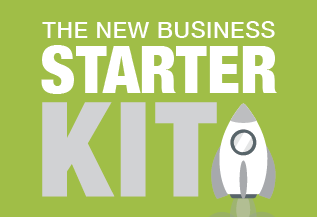Business Structures – The Family Trust
 When it comes to selecting the most appropriate structure for any business we always recommend you ‘start with the end in mind’. Australian tax laws are complex and changing your business structure mid-stream could trigger a ‘capital gains tax event’ that could have significant tax implications. As a consequence, we always recommend you consult with us about your business structure or change of business structure.
When it comes to selecting the most appropriate structure for any business we always recommend you ‘start with the end in mind’. Australian tax laws are complex and changing your business structure mid-stream could trigger a ‘capital gains tax event’ that could have significant tax implications. As a consequence, we always recommend you consult with us about your business structure or change of business structure.
When discussing alternative business structures we always take into account issues including:
- Income Tax Minimisation
- Maximisation of Asset Protection
- The Possibility of Admission of New Business Partners or Investors
- Compliance with all Legal Requirements in your Industry or Trade
- Future Entitlement to Discount Capital Gains Tax Concessions
Other key factors at play include the anticipated profitability of the business, the current tax position of all stakeholders and the risk profile of the industry you operate in. In many cases you might find that your business structure is a compromise based on the relative importance of each of these issues.
 In Australia there are a range of business structures available but the four most common structures are sole trader, partnership, company and family (discretionary) trust. With the ATO recently flagging a new crackdown on taxpayers with trust arrangements in place we thought this blog post should specifically look at the family trust option.
In Australia there are a range of business structures available but the four most common structures are sole trader, partnership, company and family (discretionary) trust. With the ATO recently flagging a new crackdown on taxpayers with trust arrangements in place we thought this blog post should specifically look at the family trust option.
A trust is a legal relationship whereby one person (the ‘trustee’) holds assets for the benefit of one or more other parties (the ‘beneficiaries’). A discretionary trust (also known as a family trust) is where the trustee is given the power and discretion to decide which of the beneficiaries are to benefit from the trust including the distribution of the income. The trustees are required to undertake all transactions and obligations on behalf of the trust and this role carries legal responsibilities. In many cases Trustees are often companies to limit liability.
A discretionary or family trust provides the following:
- Asset Protection - the assets of a discretionary trust are distinct from the assets of the beneficiaries of the trust. As such, they may be protected from creditors in circumstances where a beneficiary is sued or made bankrupt;
- Tax Minimisation - by distributing income and capital to beneficiaries who are on lower marginal tax rates and distributing different categories of income to different beneficiaries (i.e. ‘streaming’) the overall tax paid by a family group can be minimized. Each beneficiary is liable to pay tax at their own marginal tax rate on income distributions received from the trust in each financial year;
- Carry Forward losses – in some circumstances, a discretionary trust may carry forward losses;
- Capital Gains Tax Discount - a discretionary trust is entitled to a 50% discount on any capital gains made on disposal of any assets held by the discretionary trust for greater than 12 months. Note, this same discount is available to individuals, but not companies
- A Mechanism to pass family assets to future generations.
In terms of establishing a family discretionary trust there are 7 steps involved:
1. Select A Trustee - the trustee can be one or more individuals or a private (i.e. proprietary limited) company specifically set up to act as trustee. We generally recommend the use of a corporate trustee (despite the establishment cost) for asset protection purposes and to minimise the risk of personal liability.
2. Prepare Family/Discretionary Trust Deed
The terms and conditions under which a family trust is established and maintained are set out in its deed. We can help you establish the trust and the trust deed.
3. Settle the Trust
The trust deed must be signed by the settlor, who must give the initial settlement sum (usually $10) to the trustee. The settlement sum can be paid by cash or cheque. As a rule, the settlor is typically someone unrelated to the trust beneficiaries and can be your accountant, solicitor or close family friend. For tax reasons, the settlor should not be a beneficiary of the discretionary trust and they have no further involvement with the trust after the initial settlement.
4. Trustee(s) Sign the Trust Deed
The trustee(s) must hold a meeting accepting its/their appointment as trustee(s) of the trust. In the process they agree to the terms of the trust deed.
5. Stamping
State based stamp duty may be payable on the trust deed. This varies state by state and your accountant will arrange the stamping of the deed when they establish the trust deed.
6. Apply for ABN and TFN
Although in general law a trust is not recognised as a separate legal entity, they are recognised as such for taxation purposes. A trust must obtain its own tax file number (TFN) and lodge an annual income tax return. The trustee also needs to apply for a TFN in its capacity as trustee.
Once the trust has been established you need to apply for an Australian Business Number (ABN) and these applications can be completed online through the Australian Business Register or your accountant can complete them on your behalf.
7. Open a Bank Account
Once the discretionary trust has been established and the trust deed has been stamped (if stamping is required) then a bank account should be opened for the trust (in the name of the trustee as trustee for the trust). The bank will generally require the trust ABN before it will open the account.
Once a bank account has been opened the first deposit in the account should be the settled sum (see step 3 above). The settlement sum should be deposited before any other deposits are made or any other transactions are entered into by the trust.
If you’re thinking of starting a business and need advice regarding your choice of business structure talk to us today.












